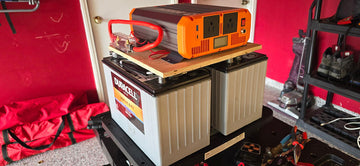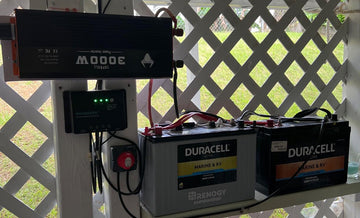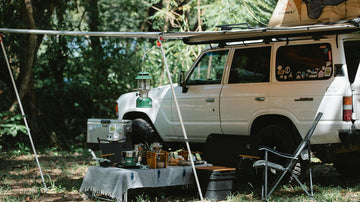During the cold winter months, have you ever experienced a rapid drop in your cell phone's charge, difficulty starting your car, or limited performance of your outdoor equipment? Behind these phenomena are closely related to the effects of cold temperatures on battery performance. This article will delve into why batteries tend to drain easily in cold weather and the specific effects of low temperatures on battery performance, as well as provide methods and strategies to cope with the effects of low temperatures to help you better understand and use your battery.
Batteries drain in cold weather: why?
Batteries do not perform well in cold climates, primarily because a drop in temperature affects the rate of internal chemical reactions. These reactions are the basis for the battery's ability to produce electrical energy, and when the temperature drops, the rate of reaction slows significantly and the battery's ability to deliver power diminishes, resulting in a device that does not function properly. In addition, low temperatures may affect the battery's electrolyte, further aggravating battery depletion.
Temperature sensitivity of different types of batteries
Different types of batteries vary in their sensitivity to low temperatures:
- Lead-acid batteries: lead-acid batteries experience a significant drop in performance when temperatures drop below freezing. Their capacity decreases and it becomes more difficult to start a car in cold temperatures.
- Lithium-ion batteries: Although lithium-ion batteries are more resistant to cold compared to lead-acid batteries, they also experience performance degradation at temperatures below -20 degrees Celsius, including significant reductions in charging and discharging capabilities.
- Nickel-metal hydride batteries: Compared to other types, nickel-metal hydride batteries are more unstable, and low temperatures can lead to shorter usage time and lower charging efficiency.
The specific impact of low temperature on battery performance
The specific impact of low temperature on battery performance is mainly reflected in the following aspects:
1. Battery capacity reduction
Under the low temperature environment, the electrolyte inside the battery becomes viscous, the active substance inside the battery decreases in vigor, the electrochemical reaction slows down, and the internal resistance increases, resulting in a sharp decrease in battery capacity. Different types of batteries have different degrees of capacity reduction at low temperatures, but they are generally significantly affected. For example, lead-acid, LiFePO4 batteries and LiFePO4 batteries typically have only about 60% of their summer capacity, or even less, when temperatures drop below zero. This means that in cold weather, the battery can provide a significant reduction in the amount of power, thus affecting the device's life time and performance.
2. Limited charging performance
Cold temperatures also affect the charging performance of the battery. Due to the viscosity of the electrolyte and the slowing down of the chemical reaction, the charging speed of the battery in low temperatures will usually be slowed down, and may not even be able to charge the situation. In addition, the charging efficiency of batteries in cold temperatures is also reduced, i.e. charging time becomes longer while less power is charged. This not only affects the normal use of equipment, but may also cause damage to the battery.
3. Decrease in discharge efficiency
Low temperature will also lead to a decline in the discharge efficiency of the battery. In the discharge process, the electrolyte inside the battery and the reaction speed of the active material slows down, making the conversion of electrical energy into chemical or mechanical energy process becomes not smooth. This can lead to a reduction in the power output of the battery during discharge, thus affecting the performance of the device. In addition, the decline in discharge efficiency may also lead to sudden power outages during the use of the battery, causing inconvenience to the user.
4. Shortened battery life
Long-term use of batteries in low-temperature environments will accelerate the aging process and shorten the life of the battery. This is because the low temperature will lead to a decrease in the rate of chemical reaction inside the battery, thus increasing the internal resistance of the battery and heat generation. All of these factors accelerate the loss of internal battery materials and performance degradation. As a result, devices that use their batteries frequently in cold weather may have a shorter battery life than in room temperature environments.
5. Increased safety risk
There are also safety risks associated with the use of batteries in cold environments. When the temperature drops to very low, the battery may not be able to charge the situation, and may even appear in the battery bulging deformation or shell cracking and other failures. These failures may lead to internal short-circuiting or liquid leakage of the battery, which may lead to dangerous situations such as fire or explosion. Therefore, when using batteries in low-temperature environments, special attention needs to be paid to safety issues.
Do lithium batteries freeze?
Lithium-ion batteries, although they perform better at lower temperatures, can still freeze in extreme cold. Although their electrolyte is less prone to freezing than lead-acid batteries, at temperatures below -40°C, the chemical reactions within the battery may be severely affected, leading to malfunction. In such cases, lithium batteries do not freeze like water, but performance will be significantly reduced.
What temperatures are harmful to lithium batteries?
The operating temperature range of lithium batteries is usually between 0℃ and 45℃. Using them in environments below 0°C or above 45°C may result in degradation of battery performance or even damage. Specifically:
- Below 0°C: Capacity is reduced, charging becomes slower and may result in the battery not being able to fully discharge internally.
- Above 45°C: Overheating may cause the battery to expand, leak, and in severe cases there may be a risk of explosion.
Ways to cope with the effects of low temperatures on batteries
The methods to deal with the impact of low temperature on the battery mainly include the following:
1. Pre-heating and insulation measures
- Preheating the battery: Before using the battery in a cold environment, its temperature can be increased by preheating. For example, place the battery in a warm environment (such as indoors or in a car) for a period of time, or use a specialized battery preheater for preheating. This helps to increase the chemical reaction rate of the battery and improve its performance.
- Insulation Wrap: Wrap the battery in high quality insulation (e.g., insulated bags, foam, etc.) to minimize heat loss. This helps to keep the battery in the appropriate operating temperature range and extend its use time.
2. adjust the charging strategy
- Choose a warm environment for charging: When charging, try to choose to do it in a warm environment, such as indoor or under the sun. This helps to improve charging efficiency and reduce charging time.
- Extend the charging time: In a low temperature environment, the charging efficiency of the battery will be reduced. Therefore, it is necessary to extend the charging time appropriately to ensure that the battery can be fully charged. For example, extend trickle charging for 1 to 2 hours after the charger's red light turns green.
- Increase the charging frequency: In the cold season, the charging frequency of the battery should be increased to avoid the battery power being too low. For example, you can adjust the frequency of charging once every 5 days in summer to once every 3 to 4 days in winter.
3. Use cold weather resistant batteries
- Choose cold-resistant batteries designed for cold weather, these batteries have better performance in low-temperature environments. Cold-resistant batteries usually use special materials and structural design to improve their chemical reaction rate and discharge efficiency at low temperatures.
4. Optimize the use of battery habits
- Avoid prolonged exposure to low temperatures: Try to minimize the exposure time of the battery in the low temperature environment to avoid serious impact on battery performance.
- Keep the battery power moderate: do not wait until the battery is exhausted to charge, and do not be fully charged for a long time without use. Keeping the battery charged at around 50% helps to extend battery life.
- Regularly check the battery status: Regularly check the health and performance of the battery to find and solve problems in time.
5. Other Precautions
- Avoid charging in an environment below 0 degrees: Lead-acid batteries and lithium batteries are very sensitive to the ambient temperature, and charging in an environment below 0 degrees may cause damage to the battery. Therefore, charging in this environment should be avoided as much as possible.
- Use a thermostat: For equipment that needs to work in a low-temperature environment for a long time, consider using a thermostat to keep the temperature of the battery stable.
Lithium batteries for cold weather use
Choosing a lithium battery that is suitable for use in cold weather is very important. Compared with ordinary lithium batteries, some lithium batteries specially designed for low-temperature environments are optimized in terms of chemical composition and materials, and are able to maintain better performance at temperatures of -20℃ or even lower. The following recommendations for several cold-resistant batteries are perfect for dealing with cold weather:
12V 100AH LiFePO4 Lithium Battery for Trolling Motors, Solar System, Marine, RV, Boat

Product Features:
- Low Temperature Cut-Off Function: The built-in battery management system (BMS) is equipped with a low temperature cut-off function, which can automatically stop charging when the temperature falls below 32°F (0°C), avoiding irreversible damage caused by low temperature charging, and protecting the battery's long-term service life.
- High-performance output: In low-temperature environments, Li-Fe batteries can still provide peak currents of up to 300-350A, which is suitable for most marine and outdoor applications and ensures that the device works properly in cold conditions.
- Better Charge Retention: Compared with lead-acid batteries, Li-Fe batteries have no memory effect and are able to retain their charge better, even during low temperatures, without a significant reduction in capacity due to prolonged periods of non-use.
- Lightweight design: Due to its 30% lighter weight, Li-Fe batteries are easier to carry and install in low-temperature applications, making them particularly suitable for use in mobile and outdoor equipment.
- Safety guarantee: Compared with traditional lead-acid batteries, lithium-iron batteries are safer in low-temperature environments, with overcharge and short-circuit protection, helping to prevent safety hazards caused by low temperatures.
FAQ
How do I preheat my battery when using my battery device outdoors?
In cold environments, you can warm up the battery in a warm room or vehicle, or use a specialized battery preheater to increase the operating temperature of the battery.
Can I use insulation material to improve the performance of my battery?
Yes, wrapping the battery with a quality insulation material (such as an insulated bag or foam) can reduce heat loss and help keep the battery at the right operating temperature for longer use.
How should I adjust my charging strategy in low temperatures?
In cold temperatures, try to choose to charge in a warm place, extend the charging time appropriately and increase the charging frequency to ensure the battery stays fully charged in cold weather.
What range of battery charge should I keep my battery in during winter?
Generally speaking, it is ideal to keep the battery level at around 50%, which will help prolong the life of the battery and minimize the impact on its performance.
How do I check the condition of my battery to ensure it is working properly?
Regularly check the appearance, connections and performance of the battery, and use a battery tester to measure the battery voltage and capacity to detect and solve potential problems in time.
What if the battery is completely drained in cold temperatures?
In extreme cold temperatures, bring the battery into a warm environment as soon as possible to allow the battery to warm back up and recharge. Avoid using or charging at too low a temperature.













